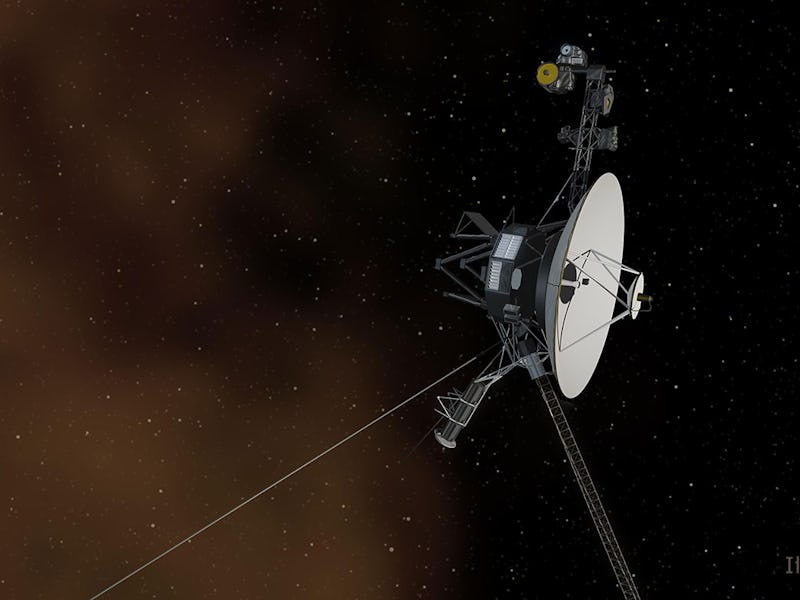Voyager 2 glitched 11.5 billion miles from Earth — here's how NASA is trying to fix it
Life in deep space is not smooth sailing.

Traveling through interstellar space for 42 years was bound to take a toll.
NASA’s Voyager 2 was designed to withstand one of the longest journeys in deep space — but that doesn't mean it is all smooth sailing.
On Tuesday January 28, the space probe experienced a technical malfunction. Its software shut down its science instruments unexpectedly, and NASA engineers are trying to fix the spacecraft as it hovers 11.5 billion miles away from Earth.
NASA announced the problem on Twitter on the account of Voyager 2's twin spacecraft, Voyager 1.
Here's what it means for Voyager 2 and the future of this scientific explorer extraordinaire.
What went down:
Before it went black, Voyager 2 was scheduled for a maneuver in which the spacecraft rotates 360 degrees in order to calibrate one of its instruments onboard. But for an as-yet unknown reason, the spacecraft did not carry out that maneuver. As a result, two of its systems — both of which consume a lot of power — were running at the same time, according to a statement by NASA.
NASA thinks that the spacecraft was using up too much of its available power supply, which triggered an automatic protection software. The software automatically turns off Voyager 2’s science instruments when there is a power overload as a means of saving on power.
The need to conserve power is great. After all, NASA can't refuel Voyager 2 — it is just too far away. Since their launch, both Voyager 1 and 2 have had a 40 percent decrease in their power supply, which is to be expected considering the work they have done over the past four decades.
Here's how NASA plans to fix Voyager 2:
NASA engineers are currently working to restore Voyager 2 to its normal operations, but it’s proving to be a little tricky from the ground. Voyager 2 is literally the furthest man-made object in space, meaning that it takes 17 hours for communications from the agency’s headquarters to reach the spacecraft. It then takes another 17 hours for the spacecraft to communicate back.
It is like trying to fix your computer from another room, and that room happens to be billions of miles away in deep space.
“As a result, mission engineers have to wait about 34 hours to find out if their commands have had the desired effect on the spacecraft,” NASA said in a statement.
This may not be the last time this happens — Voyager 1 and 2 only have finite reserves of fuel. And, eventually, they will run out, making any lasting fixes impossible.
Why we need the Voyager mission:
Together, Voyager 1 and Voyager 2 are on a joined mission to provide scientists with a unique view of our own solar system, looking at it from the outside.
Both spacecraft began their journey in 1977, and the speedier twin Voyager 1 made the jump into interstellar space in 2011 before it was followed by Voyager 2 in 2018.
Engineers putting the Voyager spacecraft together back in the 1970s.
Their time in space has so far provided scientists with valuable data on interstellar space, and enabled them to observe the Sun the same way they observe other stars in the galaxy.
The mission still has about five years left in its designated timeline. But already it has fed crucial information about our Solar System and beyond back to Earth. Ultimately, Voyager 2 will give us a better understanding of how the Sun affects the galactic environment around it.
As Inverse reported in late 2019, initial results from the mission published in the journal Nature in November, 2019, provided scientists with a pretty good idea of the shape of the heliosphere — a bubble that the Sun forms around itself which separates it from outer space.
Once the craft's instruments are back online, scientists will be able to continue harvesting data from this intrepid interstellar explorer — expanding our view of the universe beyond our own neighborhood.